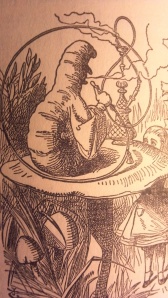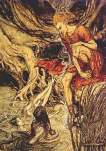Imagine this: A lush and exotic world full of strange cities and scorching deserts, darkened forests and magical waterfalls. A would be hero on a perilous quest, and the sage and wizened mentor who aids him. A corrupt empire ruled by a power hungry sorceress intent on destruction. A theme of love and courage, betrayal and redemption.
Sounds good, huh? But something’s missing
Now picture this: A Lord of The Rings in which no Balrog emerges in the Mines of Moria, no Orcs wage war, no Ents march to Isengard. No wargs, no goblins, no Eagles, no Shelob.
Oh, what a tragedy!
To me, fantasy is at its best when it features beasts of lore. Diana Peterfreund turned legend on its head when she created her Killer Unicorns Series; no divine animals these, but venomous man-eaters with fangs and razor-sharp horns. In Wizard’s First Rule, Terry Goodkind introduces us to the winged and fur-covered gars—aggressive predators that hunt using blood flies. In Laini Taylor’s Daughter of Smoke and Bone, we fall in love with her chimaera (a beautifully altered rendition of the Chimera from Greek mythology) which have both human and animal features.
These fantastical beings, whether they’re plucked from ancient myths or from the author’s own imaginings, add a richness and vitality to the genre. They transport us to a remembered state where the impossible exists. And how not, when they first blazed so vividly in our childhood dreams? Dreams in which winged steeds carried us over mountains and mermaids sang in underground cities. Where trolls hid under bridges and werewolves lurked in shadows. And the stories I love don’t always have to include the biggest and most lavish beasts, like fire-breathing dragons, monstrous kraken, or basilisks that kill with a single glance.
No, a caterpillar smoking a hookah will do just fine.
from my copy of Alice’s Adventures in Wonderland
Happy reading!
Kate











